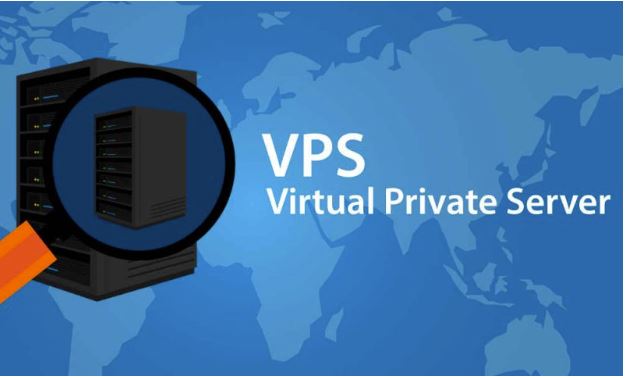Transfer pumps are used to move liquids from one place to another. Various types are suited for different applications, fluids, and industry settings. Understanding the unique features and workings of the major transfer pump types can help you select the right one for your needs. This article explores centrifugal, rotary, reciprocating, metering, and diaphragm pumps, along with their typical uses. Read on for the insight!
Types Of Transfer Pumps
There are a variety of transfer pumps available for different applications at providers like KNF USA. The major types include centrifugal, rotary, reciprocating, metering, and diaphragm designs. Below are elaborate discussions on each of these.
Centrifugal Pumps
Centrifugal pumps are a versatile choice for transferring large volumes of low- to high-viscosity liquids efficiently. At the heart of these pumps is an impeller inside a casing that spins at high speeds to accelerate fluid outward from the center via centrifugal force. The kinetic energy imparted on the liquid creates flow through the discharge piping.
Unlike positive displacement pumps, centrifugal models provide non-pulsating flows that are perfect for services like boosting pressures across piping systems. The curved vanes of impellers can handle particulates without clogging, too. You get reliable service life even when pumping water containing suspended solids or abrasives.
While centrifugal pumps generate substantial heads or pressure rises by velocity change, adjusting impeller diameters and rotational speeds allows customizing performance for the liquid and throughput demands. These pumps can tackle everything from thin polyethylene glycols to highly viscous oils or process chemicals.
Common applications capitalizing on such adaptable pumping capabilities include:
- Generating water pressures to replace gravity feed systems
- Transferring diesel and lubricants in refueling operations
- Moving liquid food ingredients between storage and processing vessels
- Circulating hot oil to distribute heat at chemical plants
- Supplying river water to filtration systems at portable plants
Whether thin or thick, corrosive or benign, centrifugal pumps represent a safe bet for continuously handling large volumes across pipelines with ease.
Rotary Pumps
Rotary pumps handle liquids through unique rotary displacement mechanisms like gears, lobes, vanes, screws, and cavities. This single shaft and bearing design not only minimizes maintenance but enables handling viscous products up to one million cPs. Such high viscosity capabilities prove invaluable when transferring adhesives, coatings, greases, tars, and heavy crude oils across food processing, chemical production, oil drilling, wastewater treatment, and paper manufacturing settings.
While providing pulse-free flow, rotary pumps allow bi-directional operation as well, either pumping or metering flow, depending on how system valves and controls are set up. This flexibility suits applications ranging from precision additive dosing to bulk transfers into tank trucks. By handling everything from solvents to sludge, you get optimal utility from just one rotary pump type.
Reciprocating Pumps
Oil patches, mines, boiler rooms, and chemical plants have relied on heavy-duty reciprocating pumps for ages to easily transfer viscous fluids. A motor-driven piston is thrust inside a cylinder to draw in suction liquid via balls check valves before discharging volumes out under high pressure—all in continuous cycles.
This positive displacement working principle is suitable for high-pressure injection duties. Plunger pumps configured for ultra-high pressures facilitate hydraulic fracturing operations across gas and oil wells to improve yields, for example. Boiler feed pumps also ensure precise metering of feedwater to maintain proper drum levels and steam output.
When handling toxic fluids like aircraft deicing agents that require containment, reciprocating pumps prevent leaks and offer explosion-proofing as well. You can count on this versatile pump style for mission-critical transfer and metering challenges.
Metering Pumps
Whether conveying ammonia, alcohol, or even fruit concentrates and medicines, metering pumps ensure accurate flow measurement and dispensing. Diaphragms pulsate or pistons stroke at controlled speeds to handle precise liquid volumes per cycle. Operating much like precision reciprocating pumps, metering units work continuously to inject additives, introduce treatment chemicals, or dose active ingredients at extremely narrow tolerances.
You gain optimized usage of expensive ingredients, prevent overdosing situations, cut loss from giveaways, and ensure product quality consistency thanks to such pinpoint flow control. Water treatment facilities, swimming pool operators, semiconductor fabs, and pharmaceutical producers rely extensively on metering pumps for regulated chemical handling day in and day out.
Read Also: 10 Benefits & Drawbacks Of Purchasing A Heat Pump
Diaphragm Pumps
Diaphragm pumps lend unique advantages for abrasive fluid handling by eliminating exposure of rotating shafts and vanes to the pumping liquid. Flexible attached membranes pulsate instead to facilitate flow. This makes diaphragm pumps ideal for slurries across mining, agriculture processing, wastewater treatment, paper mass forming, and food pureeing applications where solids quickly erode steel impellers.
Check valves ensure directional flow as the elastomer membranes alternatively draw suction and achieve discharge. You don’t have to worry about leaks either when transferring aggressive solvents or corrosive chemicals, thanks to the isolation membranes provide between pump internals and casings exposed to liquids. Whether high-purity beverage ingredients or hazardous paint pigments, diaphragm pumps safeguard processed products and personnel.
Choosing The Best Type For Your Needs
With insight into the major transfer pump categories, you can zero in on options fitting your capacity, liquid properties, flow rates, pressure rise, and overall application demands. Centrifugal pumps take the lead for high flow conditions, while metering and diaphragm designs manage strict precision flow control. Evaluate operating environments as well when materials compatibility is critical. Discussing details with suppliers gives you professional guidance to match a pump successfully.
The wide world of transfer pumps holds something suitable for any liquid transfer duty. Do your homework on the fluid properties and application specs. Understanding pump operating principles also guides you to the ideal selection. With these insights, you pick the right pump to fulfill your liquid handling requirements.
Conclusion
The various types of transfer pumps each serve distinct applications depending on factors like liquid characteristics, flow rates, pressures, precision, and duty environments. You now have a helpful overview of the unique features, workings, and typical uses of centrifugal, rotary, reciprocating, metering, and diaphragm pumps. With these fundamentals, you can make informed decisions when selecting a transfer pump for your needs. Discussing specifics with suppliers adds insights to hone in on the best equipment.
Additional:


























All Comments
GlucoRelief reviews google
Good post! We will be linking to this particularly great post on our site. Keep up the great writing
I’m often to blogging and i really appreciate your content. The article has actually peaks my interest. I’m going to bookmark your web site and maintain checking for brand spanking new information.